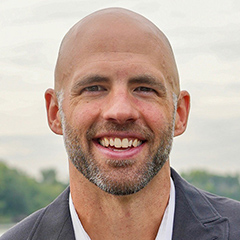September is recognized in the U.S. as National Suicide Prevention Awareness Month. During this month—and every month—we remember the lives lost to suicide, support those who are struggling, and acknowledge the impact suicide has on individuals, families, and communities.
Suicide continues to be a critical public health issue. Recent data show troubling increases in suicide rates in certain groups. For example, LGBTQ+ individuals, veterans, and American Indian/Alaska Native groups face disproportionately high suicide risks because of discrimination, trauma, and other societal stressors. Adolescents and young adults are particularly vulnerable, with suicide being one of the leading causes of death in these age groups.
General contributing factors such as mental health conditions, trauma, and social isolation intensify the risks of suicide, and social determinants of health such as economic instability, lack of access to health care, and stigma around mental illness compound the issue. These factors might prevent people from seeking the help they need, possibly pushing them deeper into crisis.
The devastating effects of suicide ripple through entire communities, leaving a lasting impact on families, friends, and loved ones. When someone dies by suicide, the emotional toll on family and friends can be profound, often leading to grief, trauma, guilt, and confusion. This loss can extend to the broader community, creating a collective sense of loss and raising questions that may never be answered.
Stigma surrounding suicide and mental illness further compounds the problem. The shame and fear associated with these issues may prevent individuals from seeking the help they need. Open discussions are stifled, and without open dialogue, opportunities for early intervention are missed. This silence not only impacts individuals but also limits communities’ abilities to come together and offer support when it is needed most.
Using evidence to design and implement prevention efforts
Evidence plays a key role in suicide prevention efforts. Data and insights help providers, communities, and decision makers understand trends, identify suicide-related disparities in certain populations (such as in rates, risk factors, and access to prevention resources), and evaluate how well prevention strategies are working.
Research can identify effective interventions, direct resources where they are needed most, and support data-driven decision making to continually improve prevention efforts that save lives. Stratifying data at the local, community, or statewide level allows for a deeper understanding of the specific needs of each community, which helps clinicians, policy makers, community-based organizations, researchers, public health officials, and families develop and implement tailored strategies and interventions that have measurable effects.
Data can also facilitate conversations about suicide, helping communities learn about the factors contributing to suicide risk and opening the door to the use of evidence-based prevention strategies.
Collaborating for change: How partners and data work together
However, evidence and data are just one piece. Preventing suicide requires the collective effort of many partners—families, providers, policymakers, educators, and community-based organizations—working together to create environments that encourage open dialogue, reduce stigma, and make people feel supported in seeking help. These partners must rely on accurate, data-driven insights to direct resources where they are most needed, tailoring interventions for maximum impact. By harnessing the power of evidence, we can support and guide these efforts while fostering the collaborative action needed to truly make a difference.
Suicide prevention is a shared responsibility that starts with education and open communication. Everyone can learn to recognize the signs of suicide risk and respond swiftly when they appear, potentially saving lives. Raising awareness about mental health and suicide is a vital step in breaking down the barriers that prevent people from seeking help. When communities are informed and there are opportunities for safe spaces for open discussion, they become safer and more supportive places for everyone. Through promoting awareness, encouraging open dialogue, leveraging data and evidence, and uniting on a shared commitment, we can work together to prevent suicide and save lives.
The following resources can help those who need support or who want to learn more or get involved:
- 988: Provides 24/7, free, confidential support for people in crisis. Calling 988 connects people with trained counselors who offer immediate help.
- Suicide Prevention Resource Center: Offers a comprehensive collection of resources, including training materials, toolkits for communities and professionals, and a registry of best practices on preventing suicide.
- National Council for Suicide Prevention: Focuses on advocacy, education, and collaboration to advance suicide prevention initiatives in the United States.
- QPR (Question, Persuade, Refer): An evidence-based program that teaches people to recognize the signs of suicide and take appropriate action.
- Be The 1 To: Organized by the National Action Alliance for Suicide Prevention and the 988 Suicide and Crisis Lifeline, this campaign focuses on five action steps for communicating with someone who might be suicidal: ask, be there, keep them safe, help them connect, and follow up. The campaign offers resources for those looking to get involved in suicide prevention.
- Mental Health First Aid: An international training program that teaches participants how to identify, understand, and respond to signs of mental health crises, including suicide.



